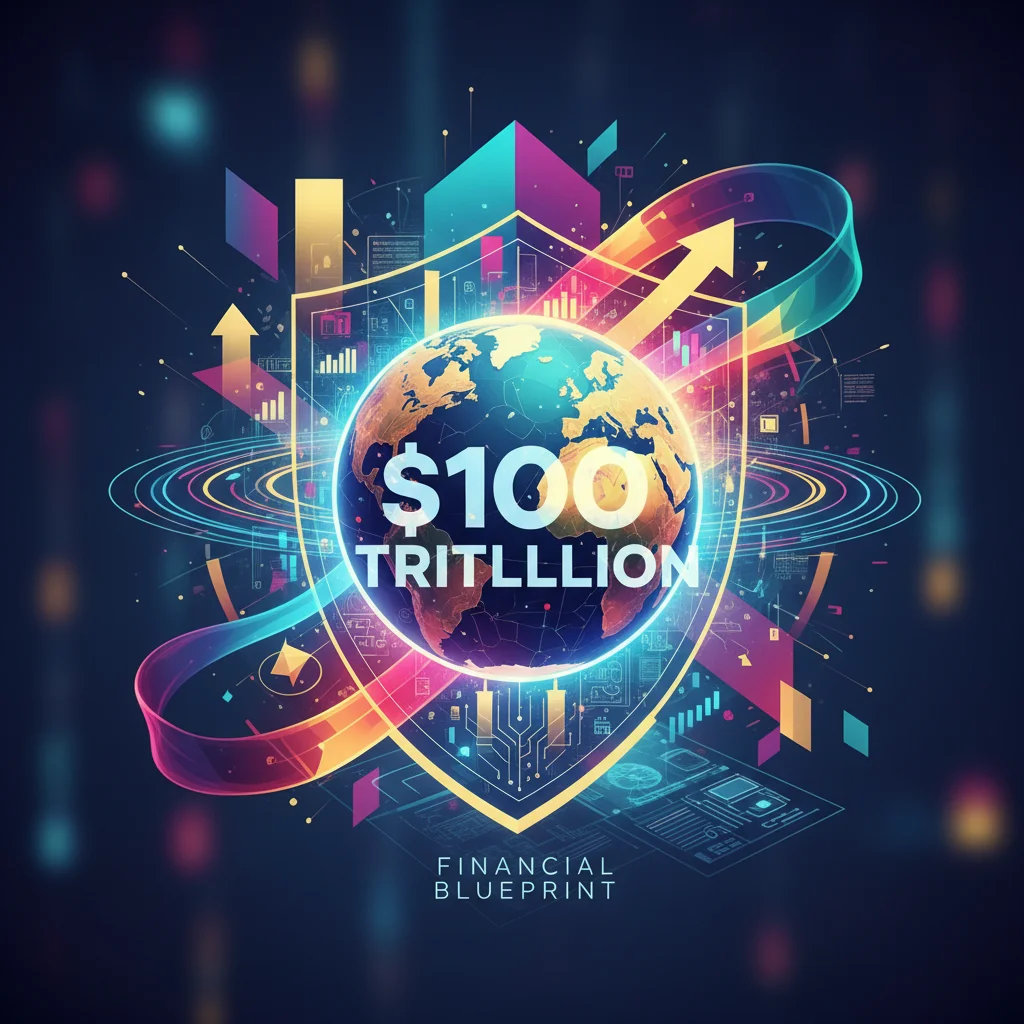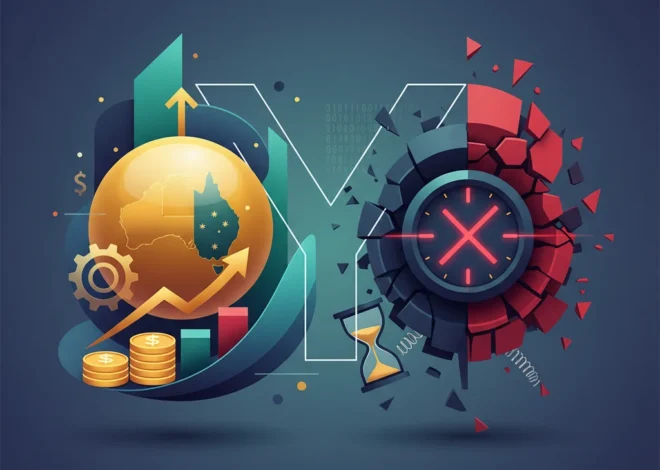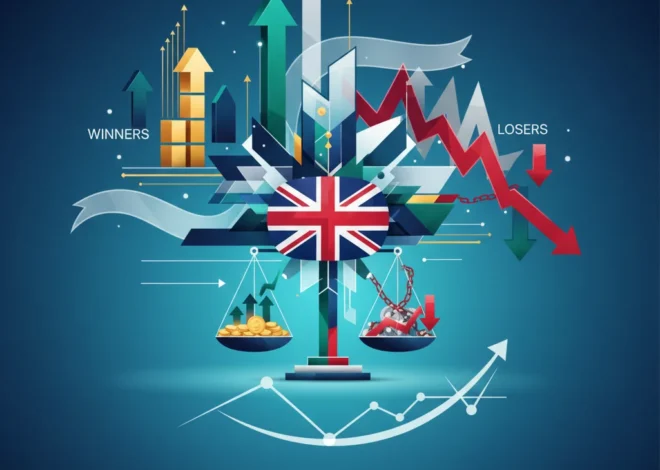
The $100 Trillion Silent Pandemic: A Financial Blueprint to Avert Global Economic Collapse
The Ticking Time Bomb in Our Global Economy
Imagine a threat more predictable than a market crash and more devastating than a trade war, yet it remains largely invisible in financial risk assessments. This isn’t a hypothetical scenario; it’s the looming reality of antimicrobial resistance (AMR), a “silent pandemic” poised to cripple the global economy. While headlines focus on market volatility and geopolitical tensions, the bacteria and viruses evolving to resist our medicines represent a systemic risk of catastrophic proportions. By 2050, the failure to act on AMR could slash global GDP by up to 3.8% and cost the world an astonishing $100 trillion, a figure that dwarfs the 2008 financial crisis (source). For investors, business leaders, and finance professionals, ignoring AMR is no longer an option—it’s a fiduciary failure.
This isn’t just a healthcare issue; it’s a fundamental threat to modern medicine and, by extension, the entire economic system that relies on a healthy, productive workforce. Routine procedures like C-sections, hip replacements, and chemotherapy could become life-threatening gambles. The very foundation of our just-in-time supply chains and globalized labor markets would crumble. The challenge, however, is not a scientific one alone. It is a profound failure of economics—a broken market that disincentivizes the creation of the very drugs we need to survive. A recent letter to the Financial Times by Mark Kessel, former Chairman of the Foundation for Innovative New Diagnostics (FIND), provides a critical starting point: a five-point checklist to fix this broken market. This article will deconstruct that checklist, translating a public health crisis into the language of finance, investment, and economic strategy.
Market Failure 101: The Perverse Economics of Antibiotics
To understand the solution, we must first diagnose the problem. Why have major pharmaceutical companies, the engines of medical innovation, largely abandoned antibiotic research and development? The answer lies in basic economics and a flawed business model. Developing a new drug is an incredibly expensive and risky venture, often costing over $1 billion and taking more than a decade. For that investment to pay off, a company needs to sell a high volume of the product over a long period.
Antibiotics are the antithesis of this model. They are:
- Used for short durations: A course of antibiotics lasts days, not a lifetime like medication for diabetes or high blood pressure.
- Priced cheaply: The market is accustomed to low-cost generic antibiotics, creating immense pricing pressure on new, innovative drugs.
- Subject to stewardship: To combat resistance, new, powerful antibiotics are deliberately held in reserve and used as sparingly as possible.
In essence, the better a new antibiotic is, the less it should be used. This creates a commercial paradox: the product’s public health value is inversely proportional to its sales potential. From a purely financial perspective, it’s a terrible investment. This classic case of market failure is where the stock market’s short-term profit motives collide with humanity’s long-term survival needs. The result? A dangerously dry pipeline for new antibiotics, leaving us vulnerable to the next superbug. UBS's Private Credit Headache, Wall Street's Crypto Gamble, and a Saudi Reality Check
A Financial Checklist for Survival: De-Risking Investment in Global Health
Mark Kessel’s proposed checklist is not merely a set of recommendations; it’s a blueprint for re-engineering the financial architecture of drug development. It aims to create a new market that rewards innovation and ensures a sustainable supply of life-saving medicines. By applying financial principles of “push” and “pull” incentives, we can transform antibiotic R&D from a high-risk gamble into a viable, predictable, and attractive area for investment.
Here is a breakdown of the five-point plan, analyzing each component from an economic and investment perspective.
| Checklist Item | Financial & Economic Implication |
|---|---|
| 1. Global Priority Setting | Establishes a clear roadmap and reduces R&D uncertainty for investors and biotech firms. Acts as a market signal, directing capital towards the most critical pathogens. |
| 2. “Push” Incentives | De-risks the expensive, early stages of research through non-dilutive funding (grants, R&D partnerships). This is crucial for small, innovative biotech companies that the stock market often undervalues. |
| 3. “Pull” Incentives | Creates a predictable market for successful drugs, independent of sales volume. This “de-links” revenue from usage, solving the core commercial paradox of antibiotics. |
| 4. Global Financing Facility | Provides the large-scale, coordinated capital needed to fund the incentives. This requires innovative banking and blended finance models, combining public and private funds. |
| 5. Equitable & Affordable Access | Ensures the solution is global, preventing AMR hotspots that could destabilize the entire system. This is a crucial component of long-term economic and geopolitical stability. |
Dissecting the Blueprint: From Push Grants to “Netflix” Subscriptions
The “push” incentives are the most straightforward. These are grants and public-private partnerships that fund early-stage research, absorbing some of the initial financial risk. Think of it as seed-stage venture capital for public health, nurturing innovation before it’s ready for the harsh scrutiny of public trading markets.
The “pull” incentives are where the financial engineering becomes truly innovative. The goal is to guarantee a return on investment for a company that successfully brings a needed antibiotic to market, regardless of how many units it sells. The most prominent example is the “subscription model,” pioneered by the UK and often called the “Netflix model” for drugs (source). Under this system, a healthcare system pays a fixed annual fee for access to a new antibiotic, much like a software license. This provides the company with a predictable revenue stream, making its financial future calculable and, therefore, attractive to investors. It transforms a commercially non-viable product into a stable, annuity-like asset.
A global financing facility, as Kessel proposes (source), is the engine that would power these incentives. This would likely be a multi-billion dollar fund capitalized by governments, development banks, and philanthropic organizations. The world of high finance and banking would be essential here, potentially designing new financial instruments—perhaps “AMR bonds”—to raise capital for this critical global good. The £20 Billion Warning: Why Financial Giants Are Urging the UK to Rethink Its Finances
However, this is also where financial technology (fintech) could play a transformative role. Imagine a global financing facility built on a blockchain ledger for unparalleled transparency in funding and disbursements. Smart contracts could automate payments for R&D milestones. A tokenized system could even be used to track the supply chain of new antibiotics, ensuring they are distributed equitably and not overused—directly addressing the “equitable access” and stewardship challenge. While it sounds futuristic, leveraging fintech could be the key to building the trust and efficiency needed to make a global solution politically palatable and operationally feasible. The fight against AMR could inadvertently become a catalyst for innovation in global financial governance.
The Ultimate Impact Investment: Turning a Global Risk into an Opportunity
For the savvy investor, this landscape of market failure and financial re-engineering spells opportunity. The transition to a new funding model for antibiotics will create a new class of investment-worthy companies. Small and mid-cap biotech firms specializing in infectious diseases, once considered too risky, could become prime acquisition targets or see their valuations soar on the stock market as their revenue models are de-risked by public-private pull incentives.
Beyond pharmaceuticals, the diagnostic sector is also poised for significant growth. Rapid, accurate diagnostics are essential for proper antibiotic stewardship—identifying whether an infection is bacterial or viral and which specific drug will be effective. Companies at the forefront of this diagnostic technology will become indispensable gatekeepers in the new AMR-aware economy.
This is the ultimate form of impact investing, where the financial returns are directly linked to averting a global catastrophe. The capital required is immense, but the return on investment—measured not just in dollars, but in saved lives and preserved economic stability—is incalculable. It’s a long-term play that requires a deep understanding of the intersection between science, policy, and economics. The British Economic Paradox: Why a Stagnant Economy Feels Surprisingly Stable
Conclusion: The Price of Inaction is a Debt We Cannot Pay
Antimicrobial resistance is an externality that the global economy can no longer afford to ignore. It is a slow-moving, predictable crisis with an invoice that will one day come due—and it will be for $100 trillion. The current market for antibiotics is fundamentally broken, a clear failure of free-market economics to provide for a critical public good.
The five-point checklist proposed by leaders like Mark Kessel offers a pragmatic, finance-driven roadmap to fix it. By implementing a combination of push and pull incentives, funded by a globally coordinated financial facility, we can reignite the engine of innovation. For business leaders, this is a matter of strategic risk management. For the banking and finance community, it is a challenge to design the novel instruments and structures that will fund the solution. And for investors, it represents a generational opportunity to back the technologies and companies that will secure not only our health but our collective economic future. The cost of this plan is measured in billions, but the cost of inaction will be paid in trillions and in millions of lives.


